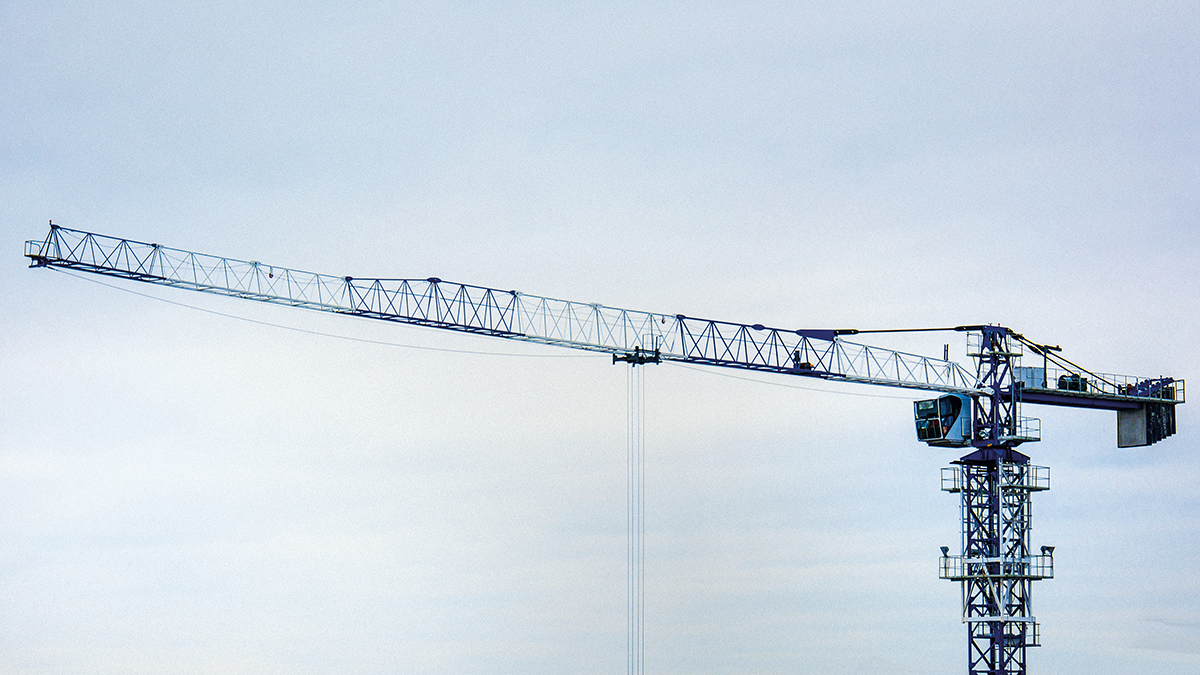
This month’s contract clinic question comes from a contractor wondering if they can bill more when wind stoppages are higher than anticipated. Luke Chamberlain responds.
The question
We’re working on a tall building project for which we’re using craneage extensively. The wind on site has been much higher than usual so we’ve had to regularly stop work. How should we price the extra cost and who is liable for the downtime?
The answer
Adverse weather is a frequent issue within the construction industry. So much so that recent studies have found that adverse weather delays up to 45% of construction projects worldwide. It is also worth noting that changes in the climate are expected to increase in frequency and intensity. Temperature, wind and precipitation are anticipated to be most common.
A known impact of wind is on crane use. When identifying the point at which it is no longer safe to operate, the crane’s user guide will specify the maximum wind speed, at which it is to be taken out of service. That said, even if the wind does not reach the speed necessary to put the crane out of service, various effects on the load can reduce productivity.
It can be argued that the key matter to address for cost allocation and liability is the ‘higher than usual’ winds. Most contracts include specific clauses addressing delays caused by the weather.
The contract should specify:
- what constitutes a weather event;
- what the weather thresholds are;
- the category of the delay (are delays excusable, neutral or culpable?).
Exceptional weather
It is common practice for the contractor to be responsible for normal or average adverse weather. Extensions of time are typically only granted for exceptionally adverse weather events.
Therefore, for a weather claim to be successful, it must be proved that, in accordance with the terms of the contract, the weather experienced was exceptionally more adverse than could have been contemplated.
As a result, it becomes important to define ‘exceptionally adverse’. Since there is no authority of guidance, it can be seen as open to interpretation as to when weather becomes exceptionally adverse.
The JCT contract lacks a definition or guidance on what counts as ‘exceptionally adverse weather conditions’. It only says that you must show the weather was not just adverse but also exceptional. This is measured by reference to historic weather conditions.
The NEC Engineering and Construction Contract (NEC3 ECC) takes a more objective and measurable approach to this matter. Weather measurements should be recorded:
- within a calendar month;
- before the completion date for the whole works; and
- at the point stated in the contract.
The measurement must be shown to occur less often than once in 10 years on average. The difference between the measurement and the less-than-decade weather is used in assessing a compensation event.
However, considering the question raised, it is important to note that while high winds are a likely delay event, they are not included in the weather measurements within the NEC3 ECC, and as such the contractor will bear the associated risk.
Measuring the wind
Therefore, if work involves activities at height, including those that cannot proceed in adverse wind conditions, the contractor should ensure that a specific weather measurement for wind is set out.
Once it is established that the weather is exceptional, then delays arising from it can be determined. The question that must be answered when establishing a weather-based delay is: did it delay the actual progress, and, if it did, how much did it delay project completion?
For this, the contractor should keep daily records, in this case, records of wind speeds and a contemporaneous log of the works affected by adverse weather.
These should include how the work was affected, if the whole or part of the day was lost, if work continued but at a slower rate, plus what steps were taken to minimise the effects on the trades and operatives involved.
After establishing that the weather has been exceptionally adverse and that the progress of the works has been delayed, it is then necessary to allocate the consequences of these delays through the contract.
A compensation event?
Under the JCT form of contract the risk associated with weather is, in effect, shared. While ‘exceptionally adverse weather conditions’ is a relevant event, meaning the contractor can claim an extension of time, it is not a relevant matter that would entitle the contractor to loss and expense.
In contrast, under the NEC3 ECC, a weather event may be a compensation event. Under clause 60.1, a contractor that complies with the conditions can claim both additional time to completion and an increase in contract price. This calculation is made in consideration of the contract’s defined costs.
In conclusion, you must determine if the wind speeds are in fact ‘higher than usual’ and, moreover, if these levels equate to exceptionally adverse conditions. Liability can then be allocated through the contract using adequate records in support of the delays. Depending on the form of contract, an extension of time may be granted, and loss and expense cost pursued.
Luke Chamberlain is a senior consultant at Decipher.











